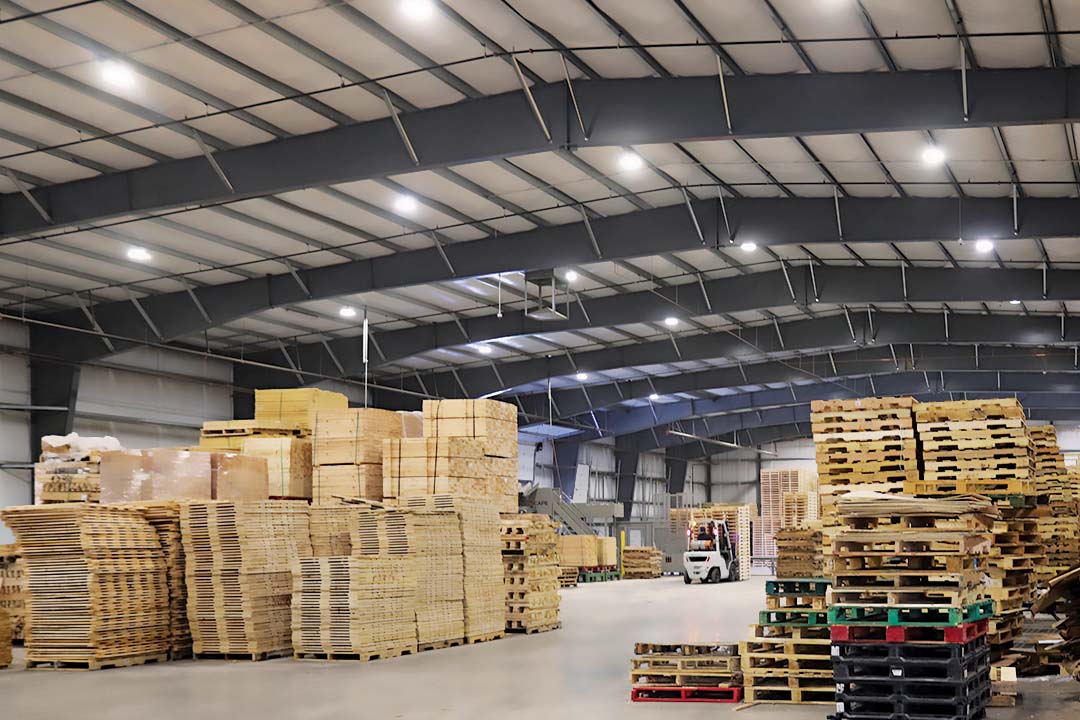
The wooden pallet, often used interchangeably (yet incorrectly) with skids in the warehouse industry, has seen widespread use since its original development and was first standardized by the International Organization for Standardization (ISO) in 1961.
The history of pallets can be traced as far back as ancient civilization and came to notable prominence during the Second World War.
But how did pallets become such an important part of modern-day warehousing? Let’s look at pallet history and how this technology became a staple of the warehouse industry.
How Does a Skid Differ From a Pallet?
Pallet history starts with the skid, a piece of lumber that is used to support items as they are stored or shipped and, in some cases, provide a temporary work surface. Skids are often made from an inexpensive material like plywood, which is then covered with a protective wrap to make the skid more durable.
Pallets are similar to skids, but the main difference is that pallet boards have been assembled into a rigid structure with stringers connecting both a top and bottom deck. This dual-deck construction provides greater loading stability than skids and makes them easier to stack.
Skids only have a top deck and lack the stringers seen in pallets. This single-deck assembly process means that the useable working surface on a skid may be less than that of a pallet. Today, skids are primarily used to store heavier objects and support heavy machinery but lack the storage flexibility offered by pallets.
The Shipping Industry Before Wooden Pallets & Skids
Before the invention of wooden pallets, the shipping industry was not as efficient or safe. Goods were loaded and unloaded by hand into wooden boxes, barrels, crates, and even cardboard boxes, which required much in the way of manual labor.
Objects that were used to move and store goods within a warehouse could be easily tipped over, and the ramifications of storage mistakes were compounded and costly.
The Forklift: The Invention That Revolutionized Shipping
The forklift, the first step in pallet history towards today’s wooden pallet, was invented in the early 1920s and was the industry’s solution to dangerous manual labor. Forklifts are best suited for heavy lifting and the transportation of goods from one location to another.
They can be loaded with up to 20,000 pounds and have many advantages: They’re fast and efficient, able to work on uneven surfaces, safe for operators in close quarters, and require little maintenance.
Ultimately, the forklift replaced much of the manual labor required to store inventory, and the invention of the skid would later complement its efficiency.
Skids: The First Step Towards Today’s Wooden Pallet
Before the invention of the wooden pallet, skids were developed and used for shipping.
The problem with this method was that it was impossible to have uniform loads as skids varied in size and length, negatively affecting the efficiency of loading and unloading goods.
The industry needed an alternative, a need that would greatly magnify at the start of the Second World War.
Wooden Pallets in World War 2
The pallet industry flourished in the 1940s and throughout the Second World War when the United States became the world’s largest manufacturer of wooden pallets.
The popularity and evolution of the forklift grew during the war, with nearly 25,000 in use, and led to a need for containers that were light enough to be picked up by these new machines and that offered greater storage flexibility than the skid.
This need led to the invention of the universal 48 X 48 pallet that provided excellent forklift access, uniform loading capabilities, and an increased load-bearing capacity.
It generally replaced the skid and made it possible for individual workers using forklifts and other warehouse machinery, like conveyor belts and pallet jacks, to easily move all types of goods from one location in a warehouse or factory to another.
As a result, the allies were able to ship military goods from one country to another with ease and efficiency.
Wooden Pallets in the Modern-Day Warehouse
As forklifts grew in use and popularity, so did the pallet industry. Both forklifts and pallets retained their popularity after World War 2 and, in 1954, the invention of the first narrow-aisle electric reach truck by British company Lansing Bagnall made it possible for pallets to be stacked higher, leading to more efficient use of storage room.
These technologies are still used today in most modern warehouses and have continued to assist global supply chain and logistics operations.
Turn Pallet Waste Into Profit With Rotochopper
The next step in the pallet lifecycle is effectively managing pallet waste. Rotochopper helps you turn your pallet waste into profit (and while minimizing tipping or disposal fees) with the help of our horizontal grinders, shredders and conveying equipment.
We’re a factory-direct company that specializes in providing complete wood processing solutions to industries all over the world.
